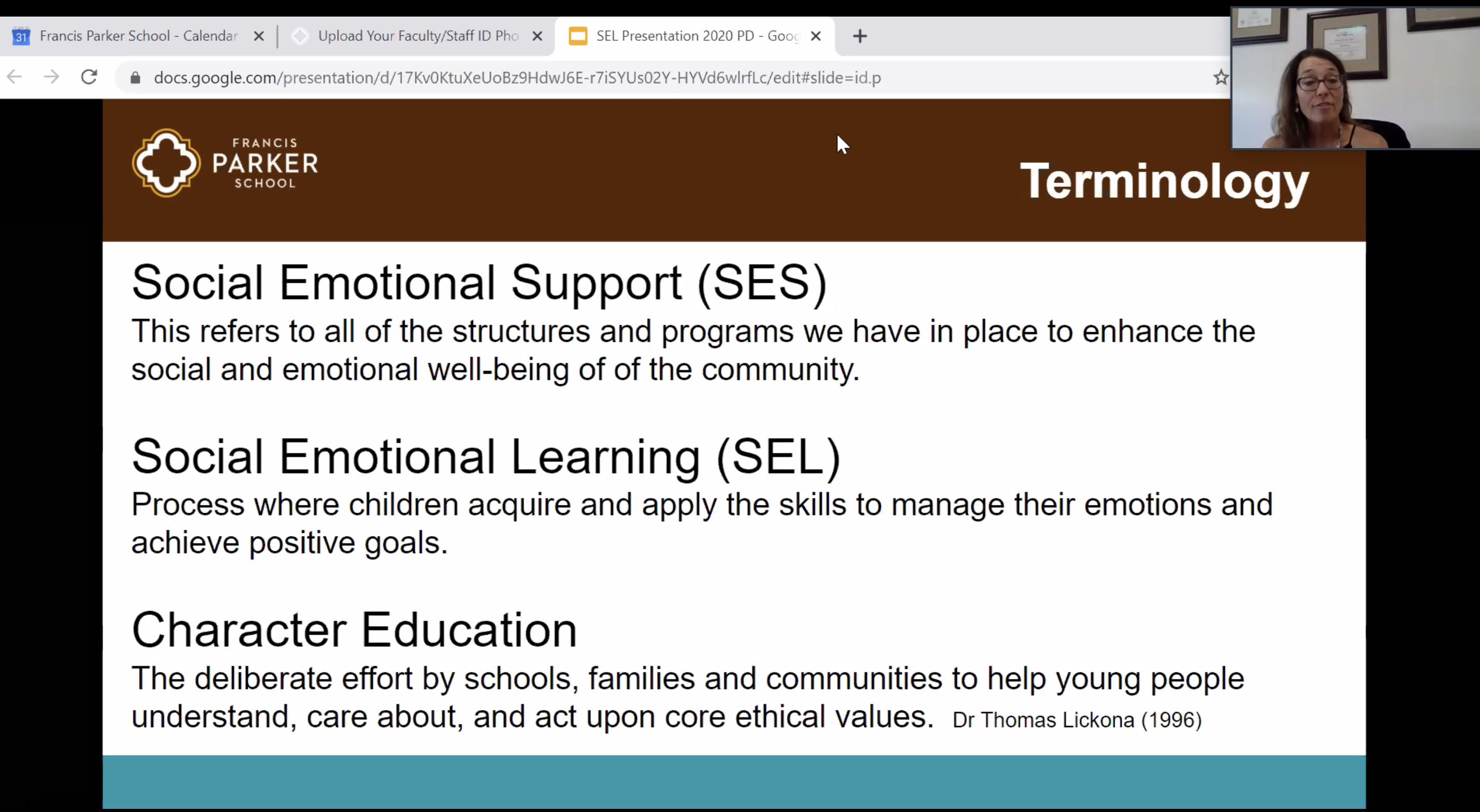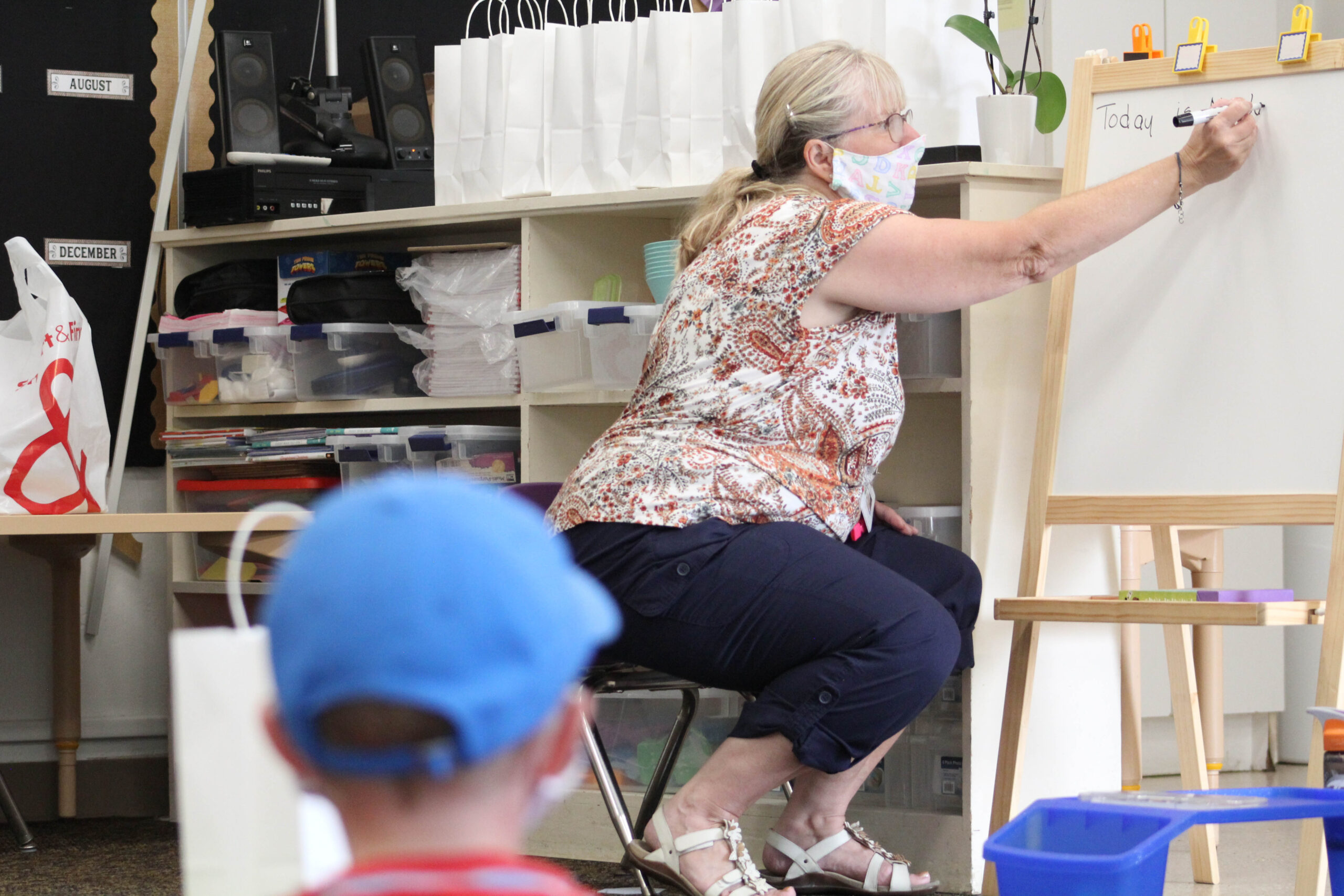
By Matthew Piechalak | [email protected]
As Parker teachers prepare to return to the classroom next week, a major component of their professional development hours has been focused on social and emotional learning.
All faculty spent six hours in virtual meetings focused on receiving support around how social and emotional learning and skill-building can be implemented into the classroom–especially within the Parker Blended learning model, where some students will log into classes virtually while others will receive on-campus learning in cohorts.
“Social and Emotional Learning (SEL) and school climate are related,” Dr. Bridgett Besinger, Dean of Student Support Services and a licensed clinical psychologist, explains to Parker employees in her introduction Monday morning during the second of three sessions. “SEL is meant to be lived within the classroom.”
The Roadmap to Return to Campus Task Force was created earlier this year to plan the critical elements of a successful return to campus. School leaders, anticipating both students and faculty would need additional support, created the Social and Emotional Support workgroup.
Bridgett and Monique Muther, Clinical Counselor for the Lower and Middle School, led the workgroup and were tasked with the creation of a document called the “Roadmap to Return to Campus Social and Emotional Support Systems.”
“We invited folks from each division to make sure we had representation and initially we started reviewing documents that had been put out by the state and the National Association of School Psychologists (NASP) that really talked about the important aspects of education that dealt more with the social and emotional needs of kids,” Bridgett says.

The vision of the framework is to “establish a psychologically safe and supportive environment that facilitates social reconnection, personal growth and resiliency for all members of the Parker community.”
“We were tasked with taking a look at social and emotional support as one aspect of the return to campus planning overall,” Bridgett says. “Thinking about COVID-19…not just the academic impact, but also asking the question, ‘what is it doing to kids’ psychological well-being and their relationships’?”
The framework includes four core values: mental health: “establishing core knowledge of basic mental health, trauma, and resiliency”; social-emotional learning: “providing lessons and activities designed specifically to build social and emotional skills as a foundational component of Parker’s character education program”; community wellness: “establishing practices to promote connection and monitor the needs of all individuals in the School community”; and restorative practices: “the implementation of practices in all classroom conducive to community and psychological safety, with an emphasis on identity, equity, and inclusion.”
Each value includes information unique to each division and specific training which will be implemented during professional development throughout the upcoming school year.
“Together, the core values provide a broad net to support our community,” Bridgett says.
As teachers and students begin to return to a new school year full of unknowns, they are bound to have new social and emotional needs.
“Nobody can anticipate with accuracy or predict the future, so really the best thing we can do to be prepared to receive the children is to be attentive to their social and emotional needs,” Bridgett says. “If we do that, we are going to be poised to respond to whatever comes up.

The workgroup is also in the process of compiling SEL resources that parents can utilize at home. Along with teachers, advisors, grade-level deans, learning specialists, counselors, and psychologists, parents serve a crucial role in the School’s SEL work, Bridgett says.
Parent roles include reviewing your child’s schedule, establishing routines and expectations, designating “no electronic” time, and supporting deeper social connections.
“Parents should remind themselves that kids are incredibly resilient, but it’s going to be imperfect,” Bridgett says. “The best thing we can do is be supportive and positive and help them troubleshoot. Also, share what you are observing about your child with their teachers and learning specialists so that we can all identify what the trouble is and go from there.”
The framework created is a working document that will grow throughout this school year and in the years ahead.
“We are trying to respond with sensitivity and empathy and recognize that if we take an approach where we create trust and space for people to voice their experiences, and we give them confidence that if they share a concern, it will be heard and responded to,” says Bridgett.




